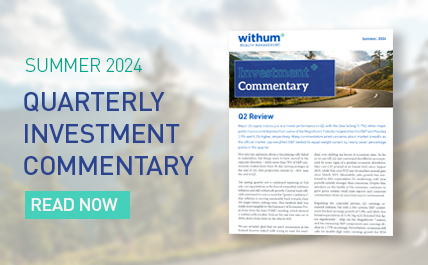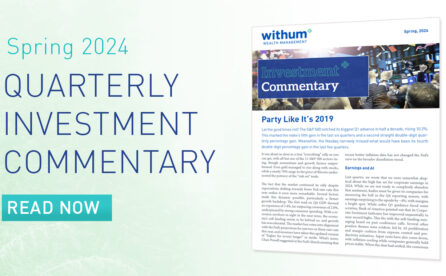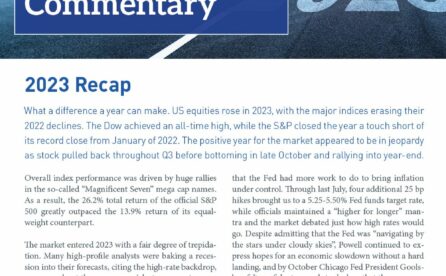A Look Back at 2015
It’s been an eventful year for markets and countries around the world. The S&P 500’s small 0.73% loss is its worst performance since the flat return of 2011 and the first negative price performance since 2008. On a total return basis the index managed a slight annual gain of 1.4%. International markets started the year strong only to fizzle as the year progressed, as evidenced by the 4.7% loss for the FTSE all World ex US index, even after adjusting for dividends.
The ongoing Syrian Civil War and the surge of Islamic State sent waves of migrants to Europe, in one of the greatest mass migrations since World War II. The thousands of migrants pouring over the Mediterranean highlighted a divide in Europe. Some Western countries welcomed refugees, while others in the East viewed the migrants as a threat to the European way of life. A terrorist attack in Paris worsened this divide and returned concerns about terrorism to the top of everyone’s agenda.
Plunging oil prices was also a big story in 2015. The sharp drop in prices has challenged energy-producing regions and at the same time provided consumers and net fuel importing countries relief. More than 250,000 energy jobs globally disappeared as a result of the collapse in oil and commodity prices.
A High Water Mark in Monetary Divergence
It’s been almost a decade since the Federal Open Market Committee (FOMC) last increased the target Fed Funds rate. During its December FOMC meeting, the Fed decided to increase the fed funds target rate for the first time since 2006 by 0.25% and began “liftoff to normalization”.
This first rate hike marks the beginning of more significant Central Bank monetary policy divergence. Only a few weeks back European Central Bank President Mario Draghi indicated the extension of their quantitative easing program until at least March 2017 and broadened Europe’s asset purchase program to include local and regional debt. The US ended such programs in 2014.
Now that the first rate hike is finally here, investor focus will shift to the Federal Reserve’s language to ascertain the pace and magnitude of future rate increases. The Fed’s current messaging indicates subsequent increases will be gradual and in line with previous projections. Their forecast for the Fed funds rate at the end of next year is 1.375% – which implies four quarter point increases during 2016. We view this measured pace akin to a “dovish” tightening as indicated by the FOMC statement: “The committee expects that economic conditions will evolve in a manner that will warrant only gradual increases in the federal funds rate. The actual path of the federal funds rate will depend on the economic outlook as informed by incoming data.” The Fed gave a positive assessment of the US economy and said it is reasonably confident inflation will rise, over the medium term, towards its 2% objective. Based on the Federal Reserve’s own economic projections, this could be a multiyear process.
Oil & Other Dislocations in the Market
Oil prices witnessed another drop in mid December as a result of Opec’s decision to maintain current production levels (OPEC, short for the Organization of Petroleum Exporting Countries, is a cartel made up of 13 countries that produce and export a substantial amount of oil). Their strategy has been to maintain production with the intent of gaining market share at the expense of US shale oil producers. However, US drillers are becoming more and more efficient. Despite the US rig count decreasing by over 60%, shale oil production is only down 5% from its recent peak. In order for oil prices to stabilize, production and capital expenditures will likely need to decrease further as demand increases. Given the oversupplied global oil market, this process could take some time, which will likely continue to keep energy related names under short term pressure. This in turn has created some opportunities in the space, as valuations are the cheapest in decades.
The drop in oil prices is reviving concerns over energy issuers in the high yield market, emerging market oil exporting currencies and companies in the energy space. Companies in the energy space feeling the pressure are not only production and services companies, but also Master Limited Partnerships (MLPs) which build out the infrastructure to store and transport oil and natural gas products. These companies have long been considered the “toll road” operators. Large infrastructure MLPs should collect a fee regardless of oil prices and therefore the value of these investments should theoretically not move in lockstep with oil prices. That has not been the case, as these pipeline operators have experienced significant downside pressure related to the drop in oil prices, even when in some cases their business models are built around natural gas and storage.
Given that the high yield market is a funding source for many energy companies, dislocations to the high yield market are also evident. The announcement by Third Avenue Management to suspend withdrawals at its junk bond fund exacerbated concerns on an already jittery market. The Third Avenue high yield fund, which is also now being investigated by the SEC, acted more like a distressed debt fund than a broad high yield bond fund. The fund had a large concentration in lowly rated and highly levered energy issuers. As such, we currently view this event as more of an anomaly than an indication of widespread trouble with the high yield market and largely confined to the debt of the lowest quality borrowers.
Credit spreads over Treasuries have widened to close to 750 basis points (7.5%). Spreads have only been this high during the Great Depression and the Financial Crisis and imply default rates of 7% percent. To put this into perspective, the current default rate in the US markets, even after accounting for some energy issuers defaulting on their debt, currently stands at 3.3% (but could increase further as other over levered issuers default). Our current belief is the economy continues to grow and a recession in the near term is not very likely. In this scenario, investing in a broad basket of diversified high yield bonds could offer some upside for disciplined, long term investors.
Outlook for the New Year
Our view is that the low and slow growth that has characterized the global economy since the financial crisis should continue into 2016. While the US Federal Reserve has officially started to normalize rates, continued accommodative monetary policy by the ECB and other Central Banks should remain supportive of risk assets into the New Year.
In the United States, both job growth and the housing market are trending in the right direction and the consumer seems to be in good shape. GDP growth will likely remain in the 2-2.5% range. Inflation will gradually move up towards the 2% Federal Reserve target. This environment, coupled with a measured pace of rate hikes by the Federal Reserve could remain supportive of equities in the near term. Corporate profits have the potential to rebound in 2016 amid oil price stabilization and a reduction in the pace of energy companies write-offs. In addition, if the rate of dollar appreciation slows down multinational companies should see an improvement in their profits, all else being equal. A moderation in the pace of dollar appreciation should also help with emerging market stabilization and their return to positive growth.
The Euro zone economy seems to be gaining momentum and we find fundamental trends and improved stability in the periphery encouraging. Several tailwinds such as a weak euro and falling commodity prices should continue to help European corporate profits (with Europe being a net importer of raw materials).
The Chinese economy continues its transition from a manufacturing based economy to a services led economy. This process could take 5-10 years and will have an impact on other resource-based economies given the reduced commodity demand of the world’s largest consumer, China. In addition, renewed concerns about a Chinese hard landing could permeate through global markets and contribute to elevated volatility levels in the near term.
Additional factors that may contribute to increased volatility include global monetary divergence, concerns about decelerating global growth and weak commodity prices. Obviously, elevated volatility and downward market movements are not new and help reinforce the need to remain disciplined and diversified in order to achieve long term investment success. We will continue to evaluate the asset classes we include in client portfolios and look for opportunities to make adjustments based on valuations and market conditions.





